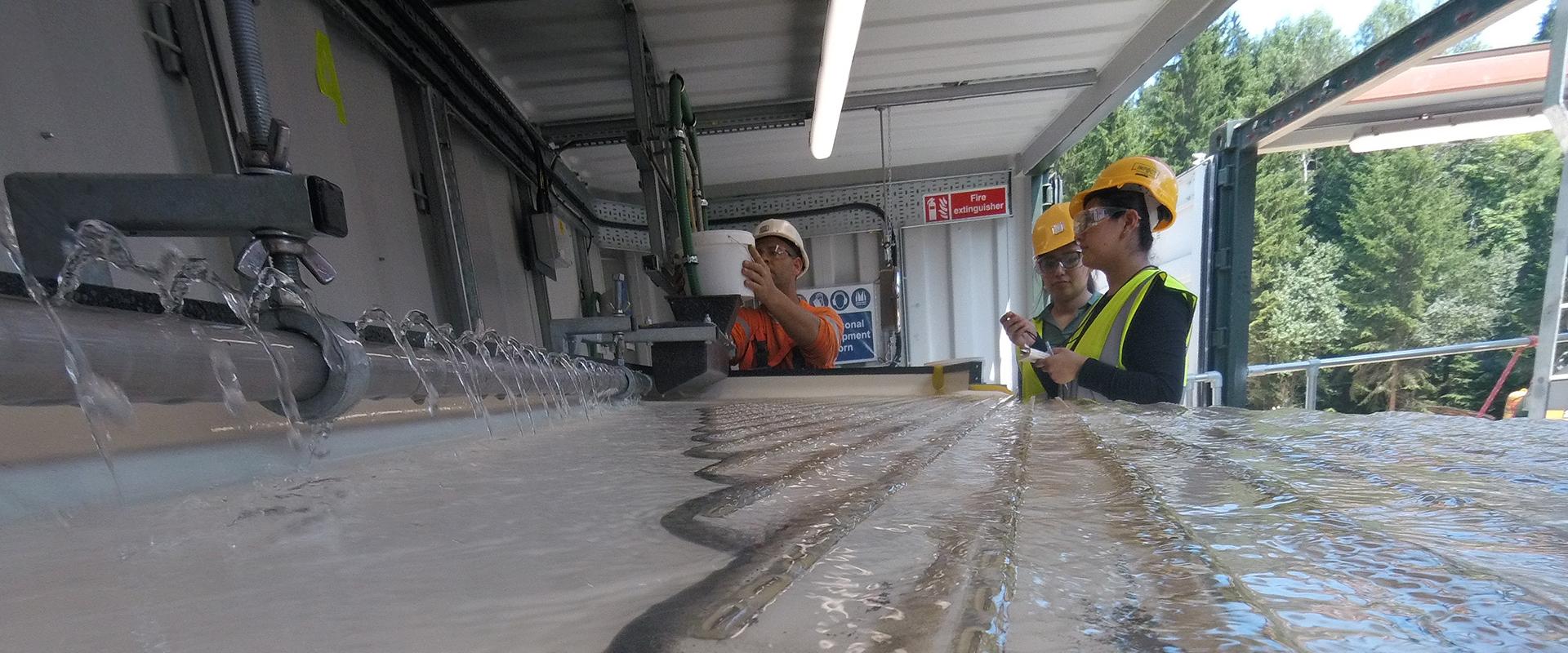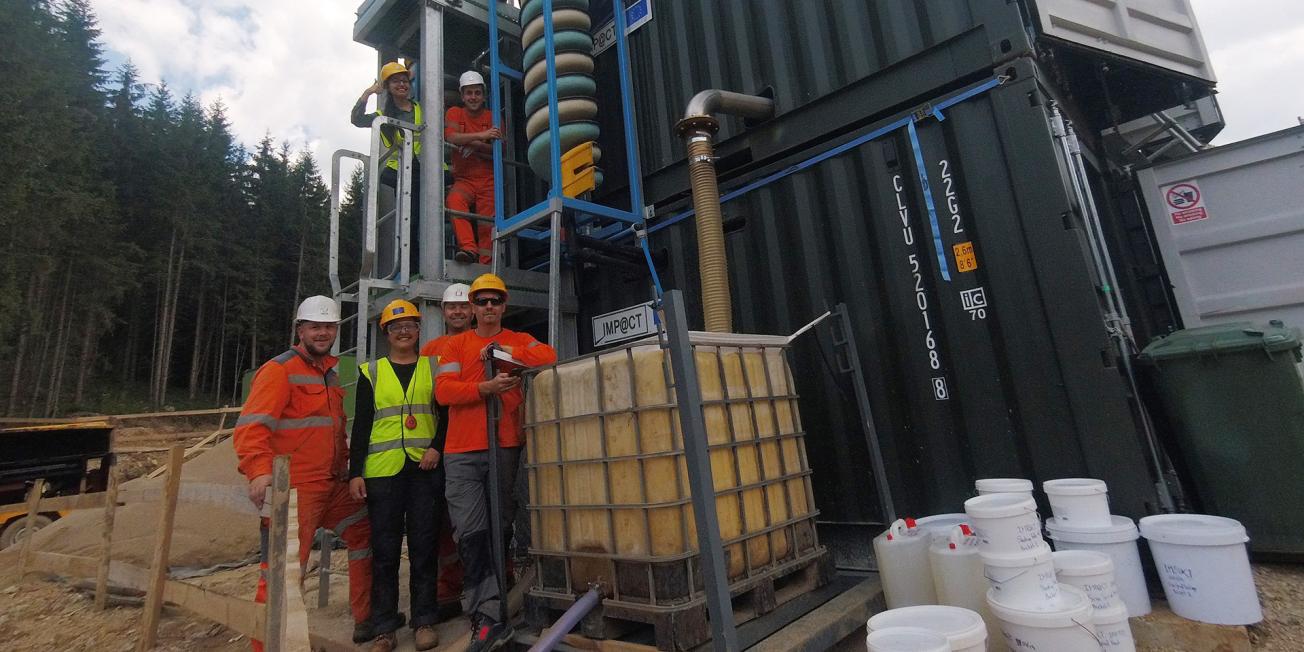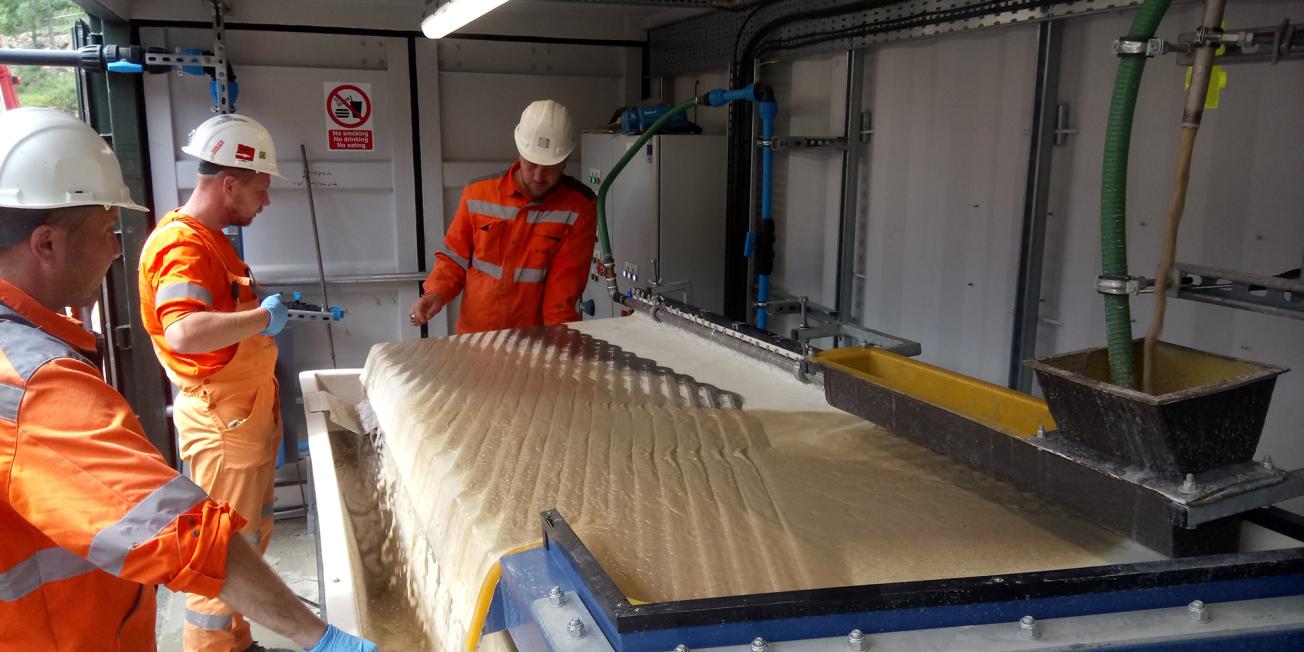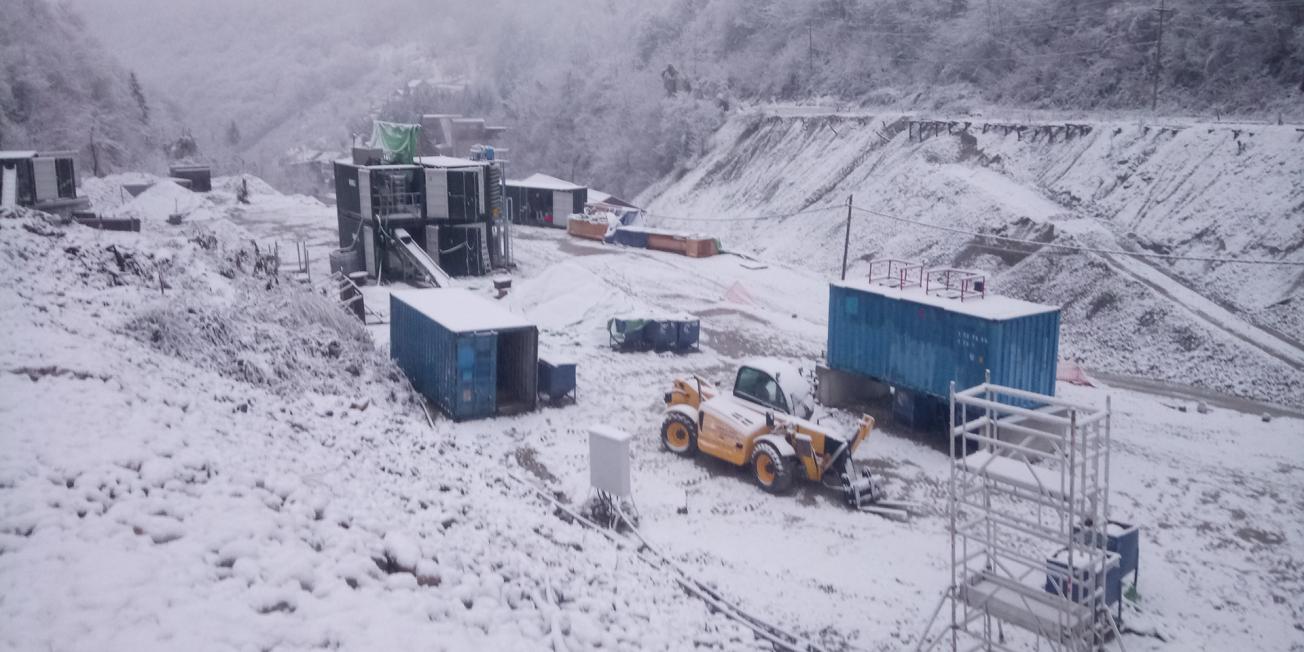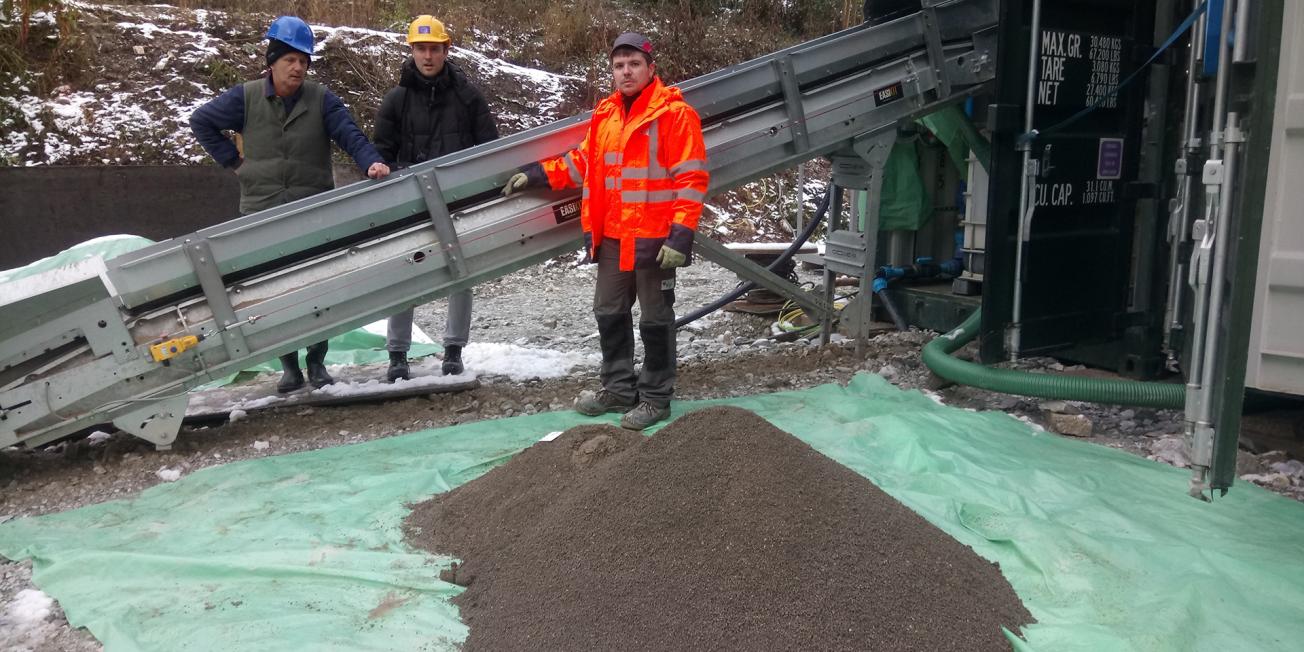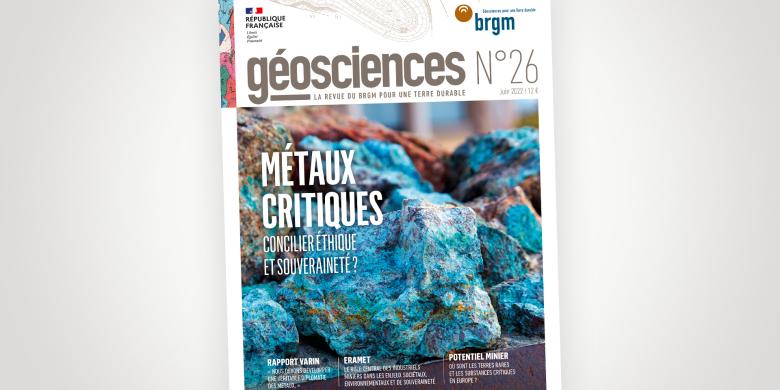Field notebook extract published in the BRGM Géosciences journal no. 26: “Critical metals, can ethics and sovereignty be reconciled?”
“The lead concentrate is flowing, finally! It has not been easy, but after several weeks of operation on site, our small-scale mining project is finally up and running.
Our facility consists of these four containers, like Lego bricks stacked on top of each other. Big green shipping containers, though instead of goods, they contain a small mobile factory. We are in Olovo, Bosnia-Herzegovina, on a former mining site redeveloped by Mineco Ltd. We are experimenting with a new way of thinking about the mining industry: modern small-scale mining. Developed within the framework of the H2020 IMPaCT project, this new paradigm aims to find a way of exploiting small, high-grade metal deposits located in Europe that are not normally considered because they would not be economically viable to exploit.
This is another way of looking at mining. Today, there are either gigantic operations that process large volumes of low-grade metals, such as the copper mines in Chile, or artisanal mines, such as in Africa or Asia, outside of any legal regulatory framework and control. Small-scale mining based on modern, mobile facilities would be an interesting way of supplying Europe with metals from small, high-grade deposits.”
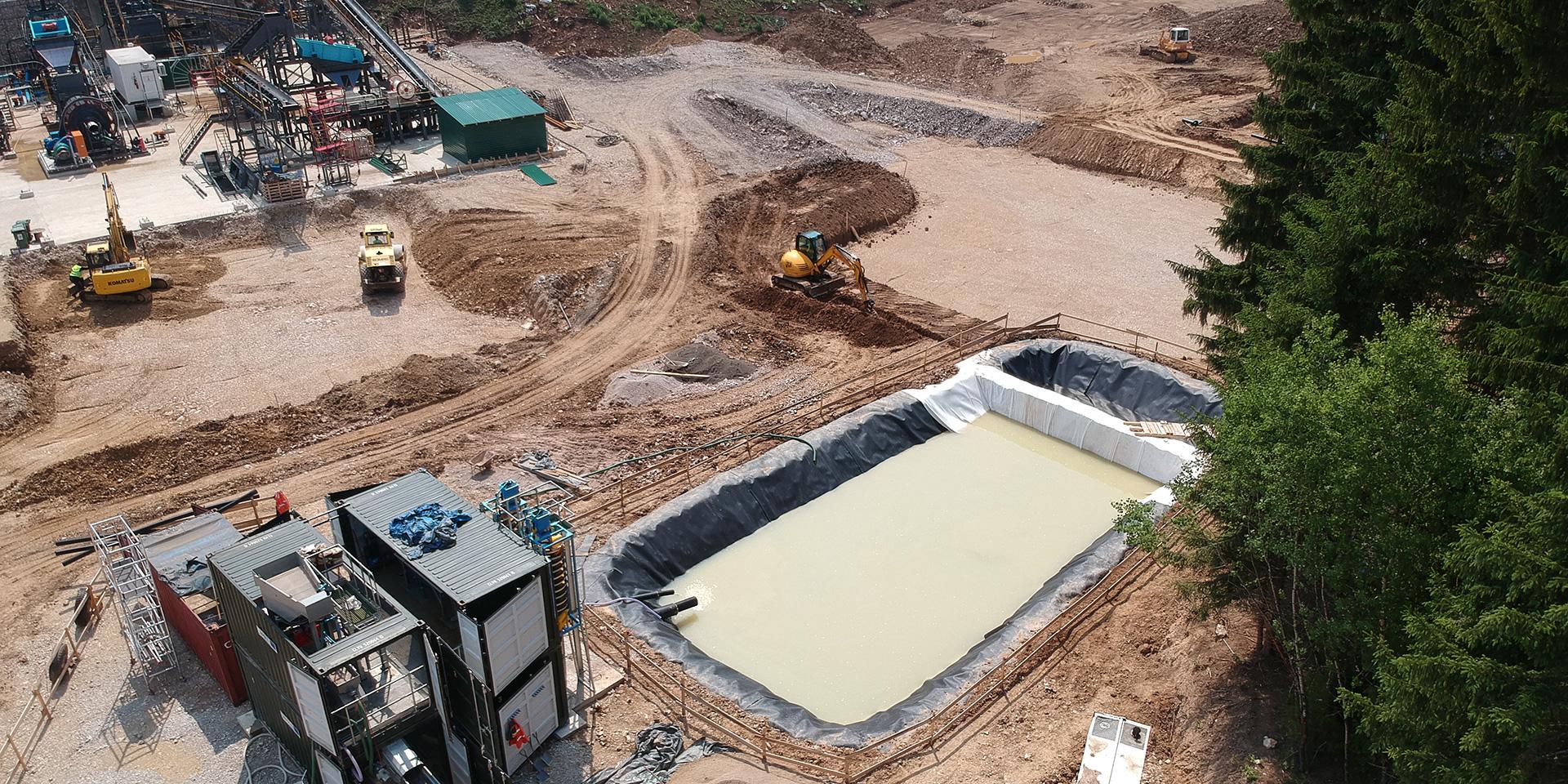
BRGM is contributing to several aspects of the project: in addition to the development of flexible treatment processes that can be adapted to different types of ore, we are intervening as consultants for identifying potentially interesting primary and secondary resource sites in Europe. The Mineral Resources team has identified approximately 500 sites that may be suitable for this type of concept.
9 July 2019
“Olovo in Bosnia-Herzegovina is the first mining site chosen to test the concept. For two years, our English colleagues worked hard to develop the prototype modules and we're finally going to be able to test them!
On site, our mobile micro-factory, contained in four shipping containers stacked on top of each other, is already waiting for us. These containers contain the equipment necessary for the separation stages that will enable us to produce our own lead concentrate.”
2nd week
“Another piece of good news is that Welsh colleagues from ‘Metal Innovation’ have been on site since the beginning of the week to set up their continuous miner machine. Their “pocket” excavator was designed specifically for the project for mechanical extraction of vein deposits. They were able to extract about 20 tonnes of ore from one of the underground mine galleries, which will be crushed and which we will be able to process further. Thus, the entire production line concept can be tested in operation on the site at the same time: a great prospect for European collaboration!”
3nd week
“The implementation and connection of the devices in the containers will have enabled a major objective to be reached, namely the TRL5-6 pilot demonstration stage of the small-scale mining concept of the IMPaCT project.”
27 November 2019
“And here we go again! The IMPaCT modules were transported to the second demonstration site in Veliki Majdan, Serbia. We have to process antimony ore, a critical metal, 90% of which is currently produced in China.
The final concentrate produced with the shaking table represents a very small proportion of the milled ore. The sample we had analysed that day by the Veliki Majdan laboratory revealed a grade of 13.5% antimony, corresponding to a concentration factor of 3 compared to the initial ore.
Although we have not reached the same stage in Serbia as in Bosnia, we have at least completed the comminution of the Zajaca antimony ore with the dedicated modules and also trained the operators. We have thus started the technology transfer with Mineco, which is seriously considering using the concept in Zajaca.
The concept of small-scale mining still needs to be developed further to attain industrial and commercial maturity. Further R&D projects will be required to scale up maturity and ultimately provide a viable solution for the supply of mineral resources in Europe through the exploitation of small, high-grade deposits, particularly targeting those containing critical metals.”
IMPaCT project
Geosciences no. 26: Critical metals, can ethics and sovereignty be reconciled?
Issue 26 of the Géosciences journal, published in June 2022, focuses on the topic of critical metals.
The energy transition towards carbon-free production reveals more than ever how dependant our technologies are on an increasing amount and variety of metals. Will we be able to meet all the needs for mineral raw materials in the coming decades? How can we secure our supplies given that the last mines in France closed at the end of the last century?
BRGM, France's leading public player in the field of mineral resources, has devoted this issue of its journal, Géosciences, to answering these questions and many others.
This issue, which includes an article by Philippe Varin, author of the recent report on securing the supply of mineral raw materials to industry, and an interview with Christel Bories, CEO of Eramet, discussing the place of metals in our daily lives, takes stock of European mining potential and reviews the state of recycling in France and the prospects for innovation in this field.

